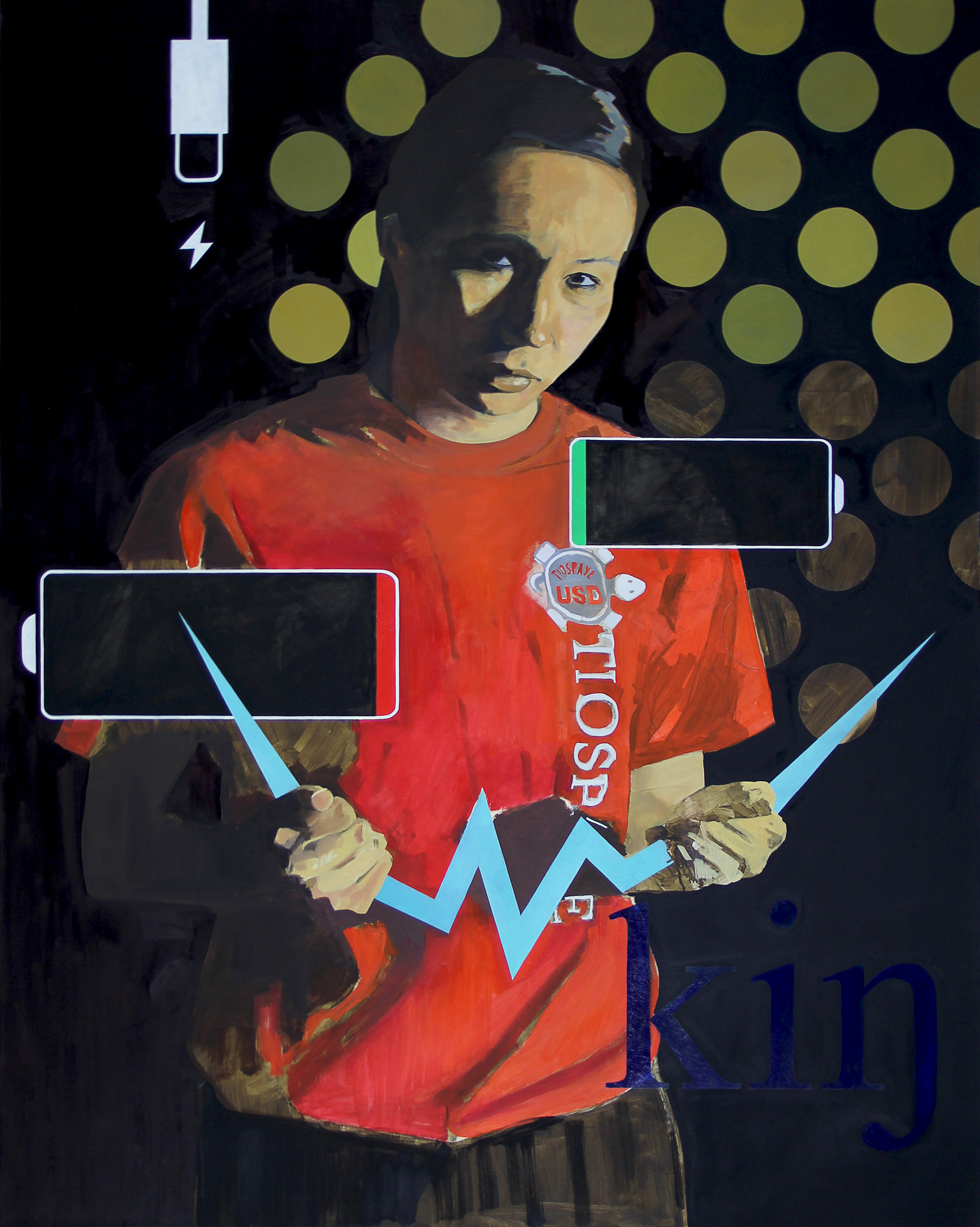Photo Credit: Aaron Packard
Wakan Takan (2018)
Signification exists within the oral traditions of the Oceti Sakowiŋ (the Dakota, Nakota, and Lakota speaking tribal nations of the Great Plains region), and that aspect of cultural identity provides the foundation for this body of work. Identity and heritage are shaped for the Lakota through the practices of oral history, and it is my intentions to both, share and encourage a cultural continuum. Intergenerational knowledge is transferred through oral histories, with creation myths providing structures for individual and community development. It is in these such stories and forms of cultural teachings that moral behaviors are identified and expressed, carrying with them elements of transcendent nature. As an artist, I recognize the energies that surround myself and I acknowledge an inherited responsibility to others. Wakaŋ Takaŋ is a series of eight oil paintings, but is also intended as a single, cinematic narrative.
Wakaŋ Takaŋ addresses the transcendent collective of elements or energies, known as “relatives” to the Lakota nation – similar to the ideology of gods in other cultures. Comprised of eight key figures, these characters portray an epic narrative of cosmological creation told through a setting with sequences of drama, humor, suspense, and inspiration. Resources for this artistic concept derive from oral histories shared among the Lakota nations on both the Pine Ridge and Rosebud reservations (both in western South Dakota), as well as discourse available on the Titonwaŋ (Lakota speaking bands). The vision for this work goes back to personal interest in accounts of story-telling, sophisticated detailing of ancient observation, and concepts of documentation and signification.
For this body of work, I chose to focus on a perspective that looks to a beginning sequence, where our key figures are described as young or youthful in mannerism. This decision was based on an effort to align contemporary voice with prominent and crucial elements of a past, in hopes of exemplifying Contemporary Art through a Lakota perspective. Contemporary artists that pronounce tribal identity or descent experience binary realities and incorporate media and influence from both spheres (traditional and mass culture). Tribal scholars are prime examples of living between these mentioned spheres, and it was necessary for the development of this body of work to utilize my privilege as part of the USD community. Model casting for the transcendent figures took place amongst current USD tribal students, with recognition of their diverse individual academic journeys. In addition to providing dominant figures for each composition, these select students contribute a critical response to inclusivity and representation of Indigenous signification within institutional and fine art contexts.
Four young men (Antone Morrison, Meeko Bear Killer, Gavyn Spotted Tail & Inkpa Mani Ruiz), and four young women (Persephone Eastman, Carmilita Shouldis, Marissa Zimiga & Summer Dupree) depict the eight deities that present Wakaŋ Takaŋ: Iŋyaŋ (rock; the first), Wi (the sun), Maka (the earth), Wakiŋyaŋ (the thunders), Skaŋ (movement or the sky), Wohpe (falling star or white buffalo calf maiden), Haŋwi (the moon), and Tate (the wind).









